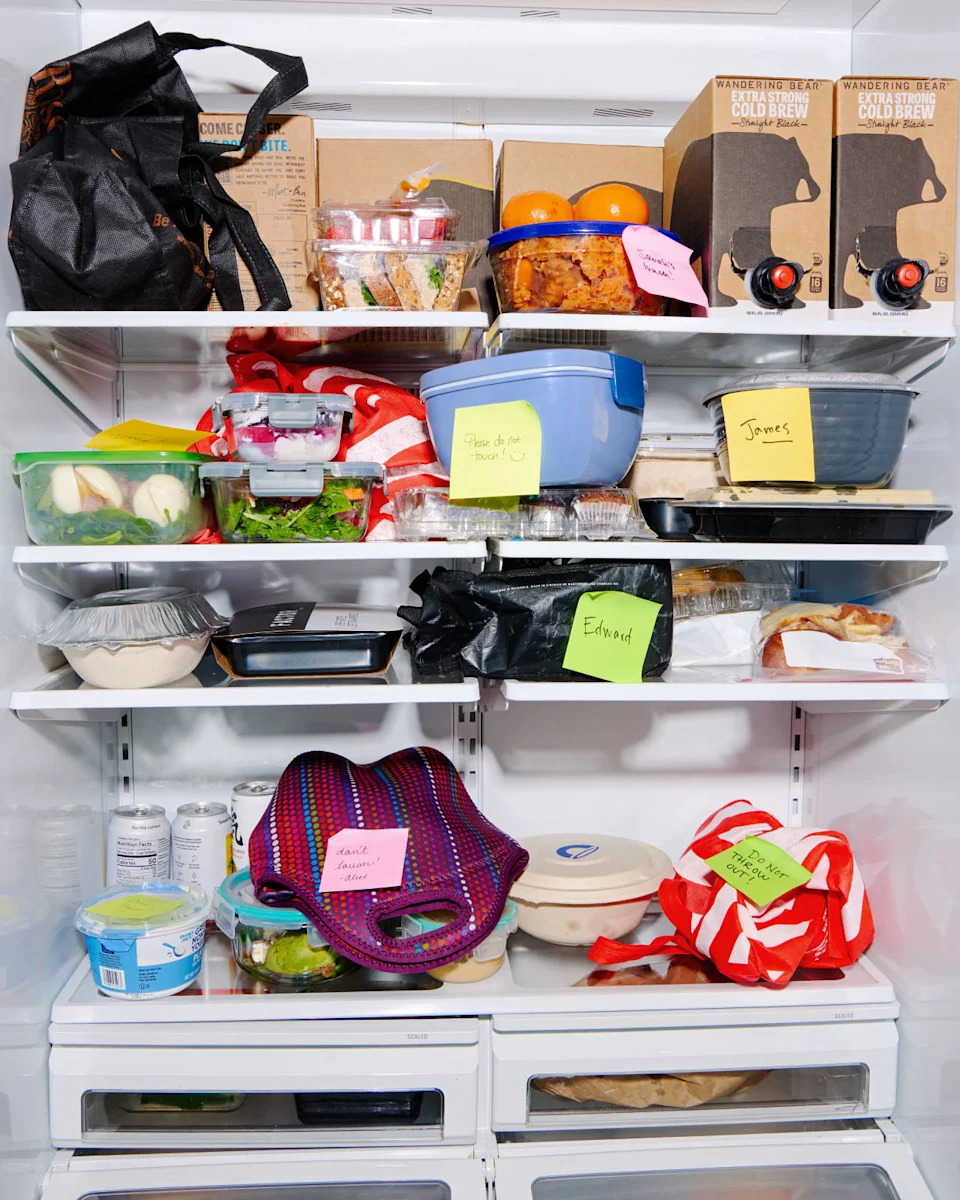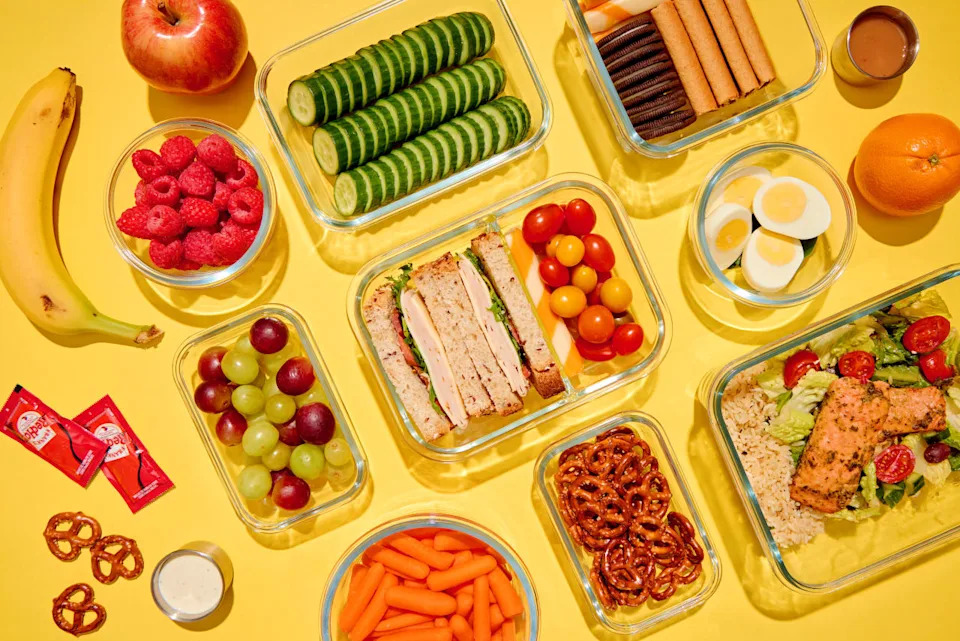More People Are Bringing Lunch to Work. That’s a Bad Economic Indicator.

Inside the office fridge, maybe behind a “Don’t Touch!” Post-it Note, is a telling economic indicator: More employees are eating lunches brought from home than they have in years.
Millions of people have been called back to work in offices, but that’s not the massive windfall that restaurants, salad bars and sandwich spots had hoped for after the Covid-19 pandemic decimated their midday business. Many workers are finding picking up lunch is too pricey, and more are schlepping in tupperware and brown bags than they did a year ago.
Nationwide, the number of lunches bought from restaurants and other establishments fell 3% in 2024 from the year before to 19.5 billion—fewer than were purchased even in 2020—the height of the pandemic work-from-home era, according to consumer-analytics firm Circana. Meanwhile, purchases of food from grocery and other stores that shoppers intend to eat at home or bring to work for lunch climbed 1%.
Bethany Kennedy, an attorney near Buffalo, N.Y., says she used to spend $500 a month going out to lunch during the week. Rising costs, including a jump in her property taxes, made her reconsider. Now she limits herself to one lunch out a week—when she’s really craving it. She brings in premade meals such as Southwest salads with corn, beans, cheese and tortilla strips or Stouffer’s three-cheese rigatoni from her local Aldi the rest of the week.
She revels in saving money, but there is a downside, she says: “I’m starting to get bored.”
The shift is a threat to the ecosystem of delis, cafes and other office-area eateries that already went through near-extinction in the 2020 pandemic lockdowns, when thousands closed for good and others struggled serving takeout for months. In downtown Boston, most full-service restaurants haven’t resumed lunch service post-Covid, said Michael J. Nichols, president of the Downtown Boston Alliance.
“We’re still not back at foot traffic levels that approach 2019,” he said. The alliance is now on alert for how new tariffs and recession fears will affect visits to fast-casual restaurants, he added.
No break for the lunchtime economy
Restaurants and city business-development groups have been stepping up their game to woo more lunchtime customers back. High Street Place Food Hall, which opened in downtown Boston in 2022, holds watch parties for events such as March Madness and the Masters to lure more workers in during the day. It has also rolled out an online ordering system so guests can skip the lunch rush lines, said Lauren Johnson, senior marketplace manager.
Greater St. Louis, Inc., an economic development organization, has hired buskers to play music, and promoted other events to help drive more foot traffic in the downtown neighborhood. The Downtown SF Partnership in San Francisco—where office occupancy hovers around 43%, according to security-badge swipe data from Kastle Systems—has been promoting performances including live jazz in two downtown public spaces during lunchtime to encourage workers to grab a bite and stay for the entertainment, said Robbie Silver, the partnership’s president and CEO.
“Postpandemic, restaurants, especially those who have relied on the nine-to five-work crowd, are still in a very vulnerable state,” he said. While he is optimistic that recent return-to-work mandates will boost lunch businesses, Silver said he’s keeping an ear out for feedback that dining traffic might be declining.

Lunchtime foot traffic to fast-casual restaurants in the U.S. fell an average of 7.9% year-over-year in the first quarter, according to data from market-research firm Black Box Intelligence. Traffic to fast-food chain outlets and other quick-service restaurants fell an average of 4.2%.
Restaurant chains had a rough year last year , with several, such as Red Lobster, the nation’s largest seafood restaurant chain, Tex-Mex restaurant Tijuana Flats and Mediterranean eatery Roti, declaring bankruptcy.
Lunchbox challenges
Many workers say they just can’t afford the price of grabbing a quick bite out. Hybrid office workers spent an average of $21.06 on lunch in 2024, up from $16 in 2023, according to a study of 2,000 full-time U.S. workers by Owl Labs, a videoconferencing company.
In a recent LinkedIn poll, 71% of about 4,250 respondents said they had made a resolution to bring their lunch to work more often.
Yet new habits can be tough to forge.
“I’m not trying to eat this spaghetti three days in a row,” said Valerie Myers, a communications professional in Richmond, Va. She knew that if she brought in last night’s leftovers she’d give up out of boredom, so she alternates them and isn’t eating for lunch what she had the night before.
Robert Johnsen, a mechanical design engineer in southern California, recently got assistance from his wife, who often packed for him the night before leftover pot pies, pizza or pulled pork made by their chef son. Still half asleep in the early morning, though, he often forgot them in the refrigerator.

“My wife is like, I can’t believe you missed it. Do I have to put a big note on it?’” he said.
Putting a lunch bag by the front door has helped Marce Walter, a registered massage therapist in Edmonton, Alberta, remember to bring her lunch to work.
“I’d get halfway to work and then it’s like, dammit, how many granola bars do I have at work?” she said.
Then there is the challenge of finding space in crammed office fridges or dealing with waits for the microwave.
“It can be a squeeze,” said Danielle Nathan, who says her employer stocks the office fridge with “every beverage under the sun you can think of” as well as fruits, yogurts, cheese and other snacks.
Nathan, who lives in Manhattan and works in education and program development for a trade association, said: “If I have something with a stronger smell, like roasted broccoli, I won’t heat it all the way to avoid the scent blossoming throughout the office.”
Write to Ray A. Smith at [email protected]

